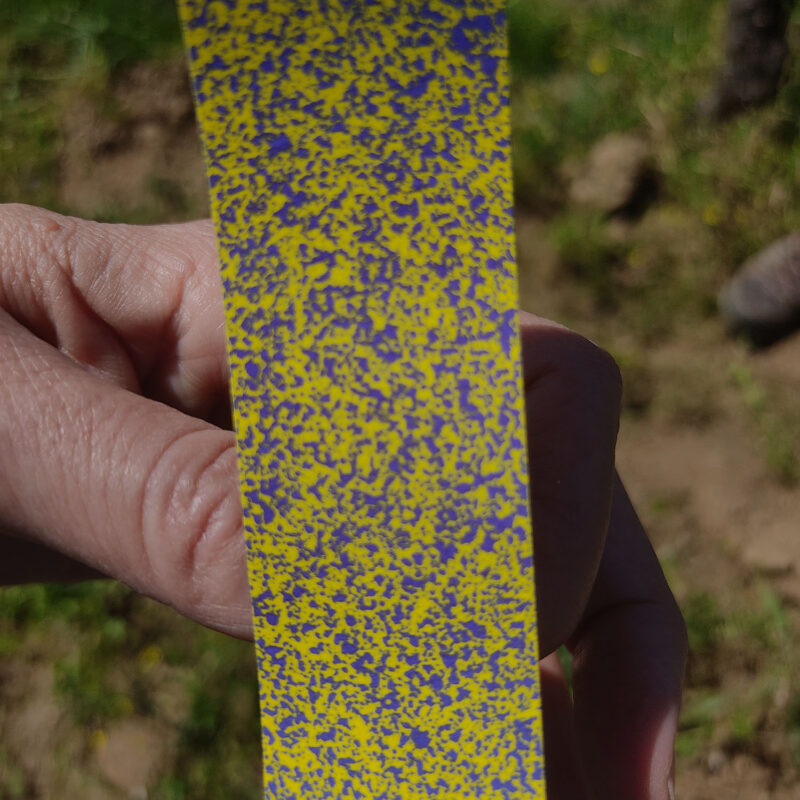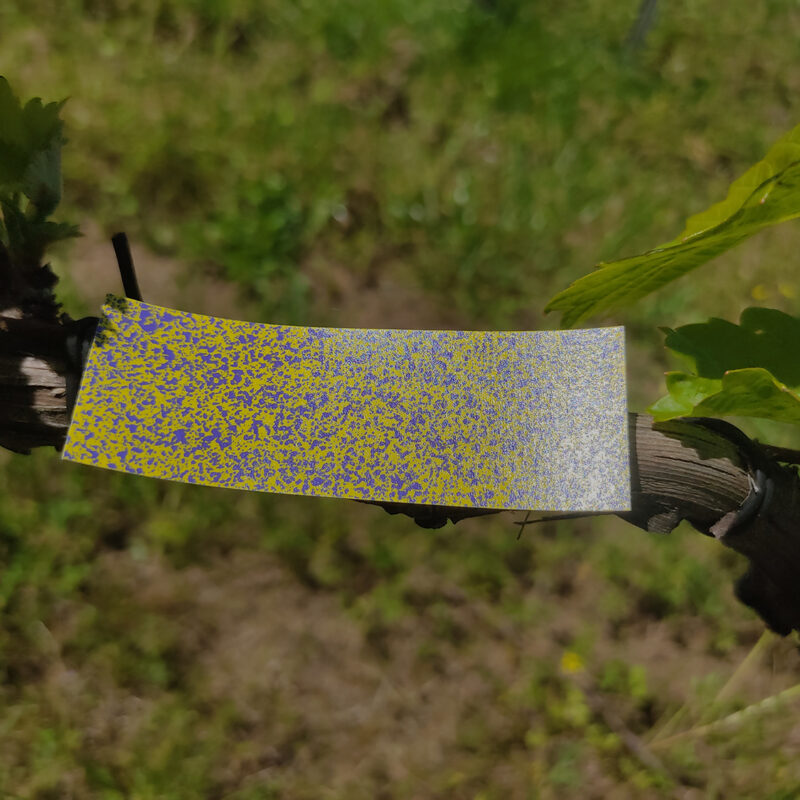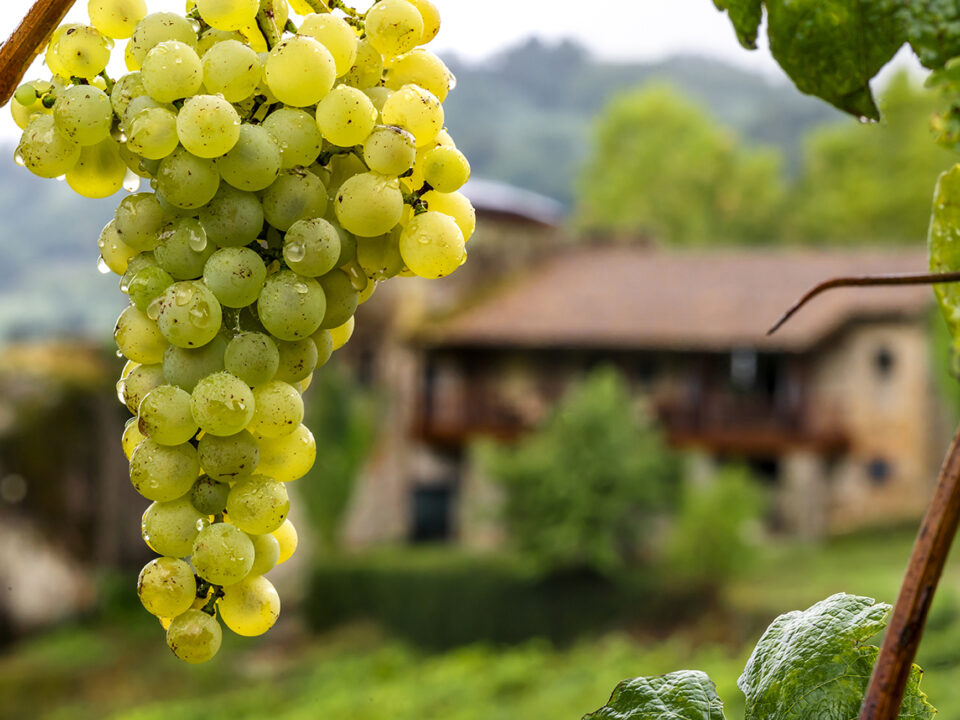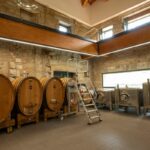
Viña Meín – Emilio Rojo wins the ACLUXEGA 2025 Award for its commitment to geothermal energy
06/06/2025In a region like Ribeiro, where fungal pressure reaches its peak during the months of April, May and June, efficient vineyard management is essential to obtain the best grapes. The weather during this period, characterized by mild temperatures and high rainfall, favors the proliferation of fungal diseases such as mildew and black rot. The Viña Meín – Emilio Rojo team maintains during these months a constant attention and very precise work strategies that change every day according to the information we collect.
Following the ecological philosophy that permeates every action at Alma Carraovejas, at Viña Meín – Emilio Rojo we have begun the first organic treatments of the vineyard. Depending on the spore collectors, the meteorological algorithms developed within the ROTEND R&D project (CDTI) and always depending on the phenology of the vine, treatments are carried out within the framework of organic viticulture, with the minimum necessary dose. Each intervention seeks to protect the vineyard with maximum respect for the environment, minimizing the use of phytosanitary products and always favoring environmentally friendly practices.
Drone in vineyard
Technology and innovation are allies of sustainability. And aerial tools are proof of this. Since 2016 (GLOBALVITI project (CIEN-CDTI, in Alma Carraovejas we incorporate the use of drone in vineyard in Pago de Carraovejas (Peñafiel, Valladolid) for the observation in the evolution of our vineyards. We are currently experimenting with drones for the application of certain operations in the vineyard, taking another step forward in the precision viticulture that we carry out in all our territories.
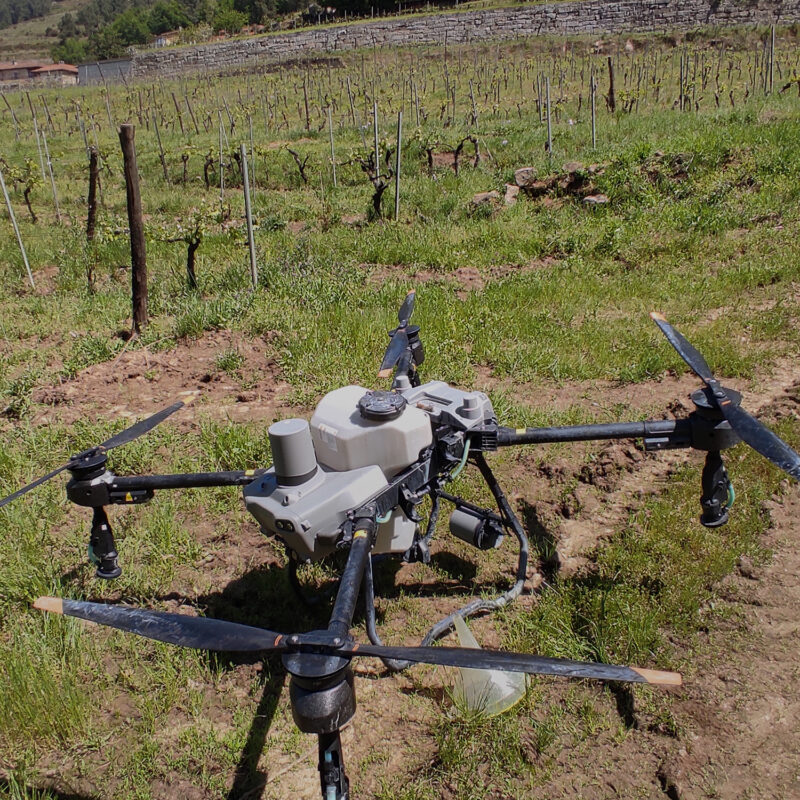
The use of drones in organic vineyards
The use of drones in vineyards can offer great advantages in organic viticulture:
Access to complicated areas: drones allow treating areas of difficult access where traditional means would have greater complications. Currently, an important part of the vineyard that is part of Viña Meín – Emilio Rojo is worked manually, due to the impossibility of mechanizing.
Improvement of physical work: at a time of the year when the workload is extremely high, manual treatments, on foot, in the field, is an extra effort for our colleagues. Partial treatment with drones would reduce the need for backpacking over rough terrain.
Immediate application: quick action can be taken in critical situations, optimizing response times. There is no need to wait for the ground to be walkable or completely dry (the latter in the case of work with machinery).
However, with these first tests, we are finding that we are facing new challenges. For example, the dispersion of the product is done by non-directed nozzles, so the application is not entirely precise and that makes it difficult to apply contact products, the majority of which are used to protect the vineyard under an organic philosophy.
Currently, the size of the bud break is quite small, which means greater safety for these treatments. When the vegetation is very lush, the treatments do not adequately reach all parts of the plant, reducing their effectiveness. There are alternatives that will be tested in the coming months.
¿Y cuál es el futuro del uso de dron en viñedo?
Hoy podemos decir que la aplicación de tratamientos mediante dron en viñedo es una herramienta con un enorme potencial. Seguiremos haciendo pruebas y evaluaciones para perfeccionar su uso en viñedos de Viña Meín -Emilio Rojo. Sin embargo, todavía no prevemos una implantación generalizada de este sistema en el año 2025 y tendremos que mantener las aplicaciones a mano y con maquinaria tradicional.
En Alma Carraovejas seguimos apostando por un equilibrio entre innovación, respeto al viñedo y compromiso medioambiental, explorando nuevas soluciones que nos permitan cuidar la tierra con la excelencia que nos define.
Agradecimientos al piloto, David Ruiz, de BENIU | Soluciones agroforestales con drones



